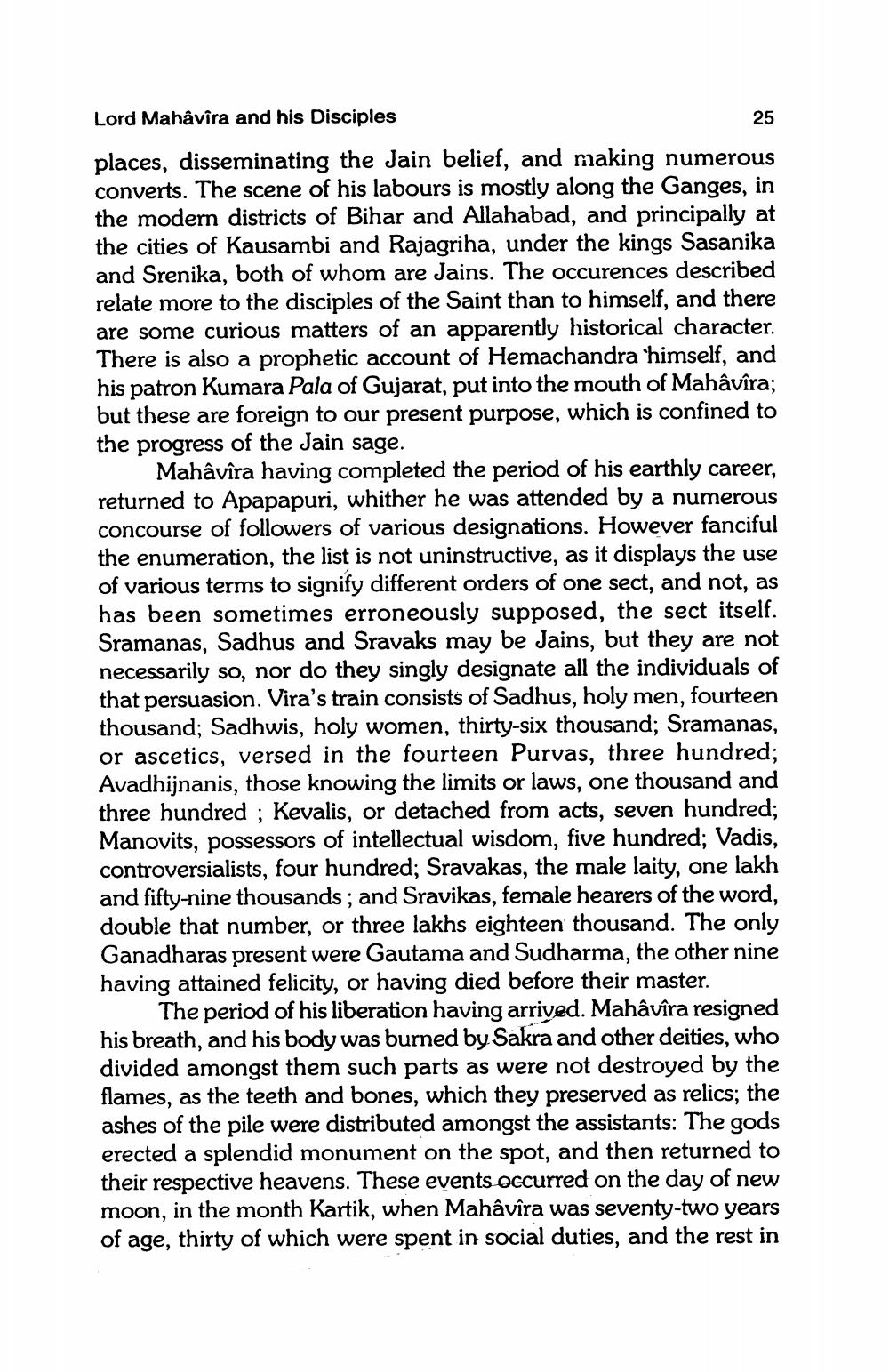________________
Lord Mahâvîra and his Disciples
25
places, disseminating the Jain belief, and making numerous converts. The scene of his labours is mostly along the Ganges, in the modern districts of Bihar and Allahabad, and principally at the cities of Kausambi and Rajagriha, under the kings Sasanika and Srenika, both of whom are Jains. The occurences described relate more to the disciples of the Saint than to himself, and there are some curious matters of an apparently historical character. There is also a prophetic account of Hemachandra himself, and his patron Kumara Pala of Gujarat, put into the mouth of Mahâvîra; but these are foreign to our present purpose, which is confined to the progress of the Jain sage.
Mahâvîra having completed the period of his earthly career, returned to Apapapuri, whither he was attended by a numerous concourse of followers of various designations. However fanciful the enumeration, the list is not uninstructive, as it displays the use of various terms to signify different orders of one sect, and not, as has been sometimes erroneously supposed, the sect itself. Sramanas, Sadhus and Sravaks may be Jains, but they are not necessarily so, nor do they singly designate all the individuals of that persuasion. Vira's train consists of Sadhus, holy men, fourteen thousand; Sadhwis, holy women, thirty-six thousand; Sramanas, or ascetics, versed in the fourteen Purvas, three hundred; Avadhijnanis, those knowing the limits or laws, one thousand and three hundred ; Kevalis, or detached from acts, seven hundred; Manovits, possessors of intellectual wisdom, five hundred; Vadis, controversialists, four hundred; Sravakas, the male laity, one lakh and fifty-nine thousands; and Sravikas, female hearers of the word, double that number, or three lakhs eighteen thousand. The only Ganadharas present were Gautama and Sudharma, the other nine having attained felicity, or having died before their master.
The period of his liberation having arrived. Mahâvîra resigned his breath, and his body was burned by Sakra and other deities, who divided amongst them such parts as were not destroyed by the flames, as the teeth and bones, which they preserved as relics; the ashes of the pile were distributed amongst the assistants: The gods erected a splendid monument on the spot, and then returned to their respective heavens. These events occurred on the day of new moon, in the month Kartik, when Mahâvîra was seventy-two years of age, thirty of which were spent in social duties, and the rest in




